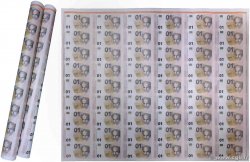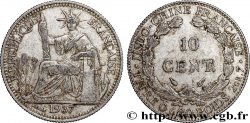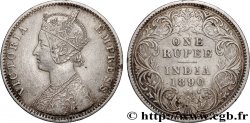Live auction - fjt_941871 - NETHERLANDS - UNITED PROVINCES - UTRECHT IMPOTS ET TAXES D’UTRECHT 1596
You must signin and be an approved bidder to bid, LOGIN TO BID. Accounts are subject to approval and the approval process takes place within 48 hours. Do not wait until the day a sale closes to register. Clicking on "BID" constitutes acceptance of the terms of use of cgb.fr private live auctions.
Bids must be placed in whole Euro amounts only. The sale will start closing at the time stated on the item description; any bids received at the site after the closing time will not be executed. Transmission times may vary and bids could be rejected if you wait until the last second. For further information check the Live auction FAQ
All winning bids are subject to a 18% buyer’s fee.
All winning bids are subject to a 18% buyer’s fee.
| Estimate : | 400 € |
| Price : | 200 € |
| Maximum bid : | 200 € |
| End of the sale : | 20 August 2024 17:15:30 |
| bidders : | 1 bidder |
Type : IMPOTS ET TAXES D’UTRECHT
Date: 1596
Metal : copper
Diameter : 32 mm
Orientation dies : 2 h.
Weight : 6,87 g.
Edge : lisse
Catalogue references :
Obverse
Obverse legend : PERFER. ET. OBDVRA. ANNO. DNI 1596.
Obverse description : Une tortue entourée de cinq abeilles.
Obverse translation : Endurer et persévérer. Année du Seigneur 1596.
Reverse
Reverse legend : X G • POVR • LES • EST. X D'VTRECH.
Reverse description : Écu aux armes de l'Etat d'Utrecht.
Reverse translation : Geton pour les États d'Utrecht.
Commentary
Jeton frappé en 1596 dans les Etats d’Utrecht pour appeler les cityens à supporter la levée de nouveaux impots pour financer la guerre contre l’Espagne des Habsbourg catholiques.
Le traité de l'Union d'Utrecht (Unie van Utrecht) est signé le 23 janvier 1579 à Utrecht, entre une douzaine de provinces des Pays-Bas septentrionaux qui veulent se séparer des Pays-Bas espagnols pour des raisons religieuses (liberté religieuse et calvinisme contre catholicisme) et politiques (se débarrasser du joug de l'Espagne de Philippe II). Dans l'année qui suit, plusieurs provinces supplémentaires, et de nombreuses villes-Etats adhèrent au traité. Celui-ci marque de fait l'indépendance de la République des Provinces-Unies, proclamée le 26 juillet 1581 par l'Acte de la Haye. Cette indépendance des Dix-Sept Provinces ne sera cependant reconnue par l'Espagne qu'à l'issue de la guerre des Quatre-Vingt Ans, en 1648, par la Paix de Münster, incluse dans le célèbre traité de Westphalie (lequel est considéré comme fondateur des relations internationales modernes).
Dans ce contexte de décennies de conflits entre les Provinces-Unies et l'Espagne, les Etats d'Utrecht sont contraints de lever de nouveaux impôts et de nouvelles taxes (sur la bière, le beurre, le fromage) pour financer l'effort de guerre. Ce jeton en cuivre ou cuivre argenté (diamètre 32mm, poids 6,6g) invite les citoyens (figurés par une tortue à l'épaisse carapace) à supporter cette nouvelle pression fiscale (figurée par des abeilles agressives)..
Token struck in 1596 in the States of Utrecht to call on the city dwellers to support the levying of new taxes to finance the war against Catholic Habsburg Spain.
The Treaty of the Union of Utrecht (Unie van Utrecht) was signed on 23 January 1579 in Utrecht, between a dozen provinces of the Northern Netherlands who wanted to separate from the Spanish Netherlands for religious reasons (religious freedom and Calvinism versus Catholicism) and political reasons (getting rid of the yoke of Philip II's Spain).. In the following year, several additional provinces and numerous city-states joined the treaty.. This in fact marks the independence of the Republic of the United Provinces, proclaimed on July 26, 1581 by the Act of the Hague.. This independence of the Seventeen Provinces would not, however, be recognized by Spain until the end of the Eighty Years' War, in 1648, by the Peace of Münster, included in the famous Treaty of Westphalia (which is considered the foundation of modern international relations)..
In this context of decades of conflict between the United Provinces and Spain, the States of Utrecht were forced to raise new taxes and duties (on beer, butter, cheese) to finance the war effort.. This copper or silver-plated copper token (diameter 32mm, weight 6.6g) invites citizens (represented by a turtle with a thick shell) to support this new tax pressure (represented by aggressive bees).
Le traité de l'Union d'Utrecht (Unie van Utrecht) est signé le 23 janvier 1579 à Utrecht, entre une douzaine de provinces des Pays-Bas septentrionaux qui veulent se séparer des Pays-Bas espagnols pour des raisons religieuses (liberté religieuse et calvinisme contre catholicisme) et politiques (se débarrasser du joug de l'Espagne de Philippe II). Dans l'année qui suit, plusieurs provinces supplémentaires, et de nombreuses villes-Etats adhèrent au traité. Celui-ci marque de fait l'indépendance de la République des Provinces-Unies, proclamée le 26 juillet 1581 par l'Acte de la Haye. Cette indépendance des Dix-Sept Provinces ne sera cependant reconnue par l'Espagne qu'à l'issue de la guerre des Quatre-Vingt Ans, en 1648, par la Paix de Münster, incluse dans le célèbre traité de Westphalie (lequel est considéré comme fondateur des relations internationales modernes).
Dans ce contexte de décennies de conflits entre les Provinces-Unies et l'Espagne, les Etats d'Utrecht sont contraints de lever de nouveaux impôts et de nouvelles taxes (sur la bière, le beurre, le fromage) pour financer l'effort de guerre. Ce jeton en cuivre ou cuivre argenté (diamètre 32mm, poids 6,6g) invite les citoyens (figurés par une tortue à l'épaisse carapace) à supporter cette nouvelle pression fiscale (figurée par des abeilles agressives)..
Token struck in 1596 in the States of Utrecht to call on the city dwellers to support the levying of new taxes to finance the war against Catholic Habsburg Spain.
The Treaty of the Union of Utrecht (Unie van Utrecht) was signed on 23 January 1579 in Utrecht, between a dozen provinces of the Northern Netherlands who wanted to separate from the Spanish Netherlands for religious reasons (religious freedom and Calvinism versus Catholicism) and political reasons (getting rid of the yoke of Philip II's Spain).. In the following year, several additional provinces and numerous city-states joined the treaty.. This in fact marks the independence of the Republic of the United Provinces, proclaimed on July 26, 1581 by the Act of the Hague.. This independence of the Seventeen Provinces would not, however, be recognized by Spain until the end of the Eighty Years' War, in 1648, by the Peace of Münster, included in the famous Treaty of Westphalia (which is considered the foundation of modern international relations)..
In this context of decades of conflict between the United Provinces and Spain, the States of Utrecht were forced to raise new taxes and duties (on beer, butter, cheese) to finance the war effort.. This copper or silver-plated copper token (diameter 32mm, weight 6.6g) invites citizens (represented by a turtle with a thick shell) to support this new tax pressure (represented by aggressive bees).







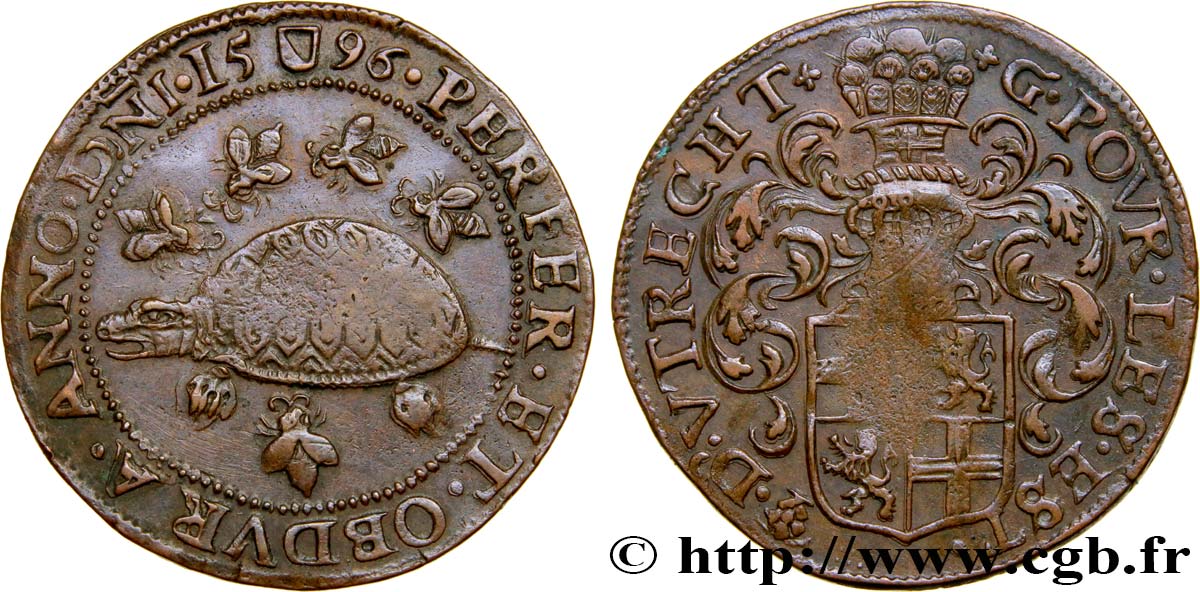
 Report a mistake
Report a mistake Print the page
Print the page Share my selection
Share my selection Ask a question
Ask a question Consign / sell
Consign / sell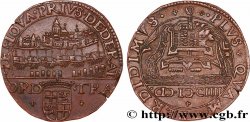
 Full data
Full data


